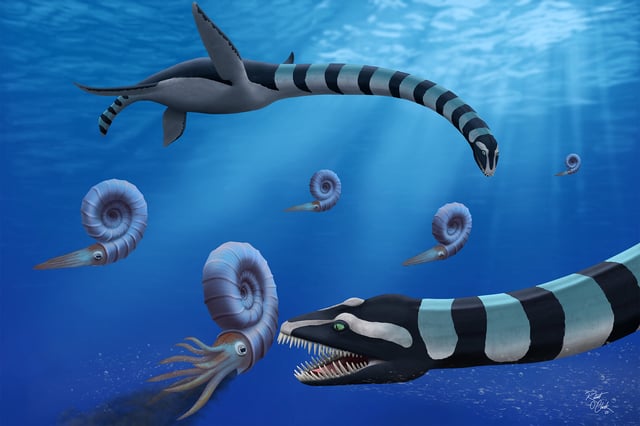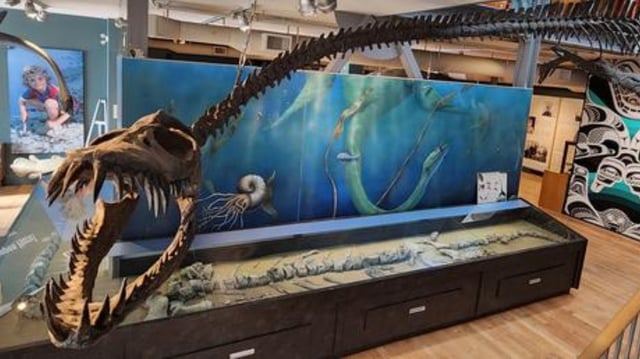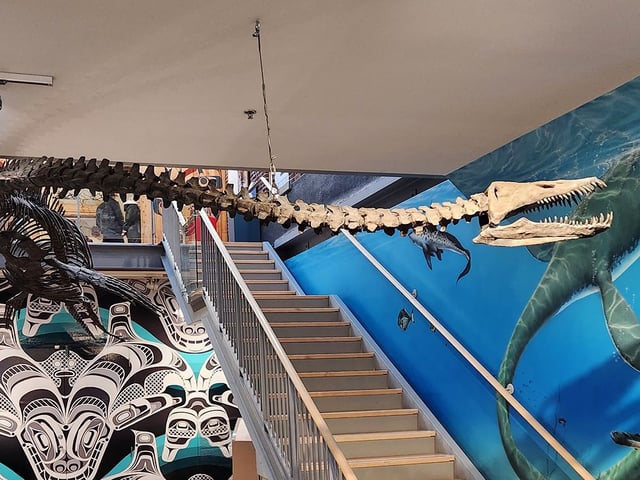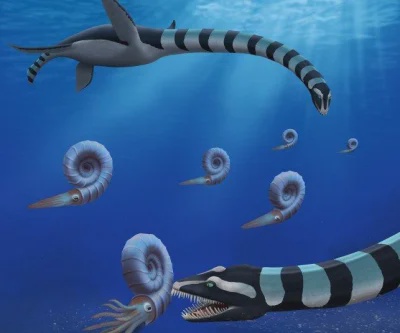Overview
- The newly named Traskasaura sandrae, a 12-meter-long elasmosaur, was officially recognized in the Journal of Systematic Paleontology on May 23, 2025.
- Fossils from Vancouver Island, first discovered in 1988, were reexamined with a well-preserved juvenile skeleton found in 2020, enabling definitive classification.
- Traskasaura sandrae exhibited a unique mix of primitive and derived traits, including heavy crushing teeth and a downward-opening shoulder structure.
- Researchers suggest the marine reptile was among the first plesiosaurs to hunt by diving from above, preying on ammonites with its robust teeth.
- The genus honors Michael and Heather Trask, who discovered the holotype, while the species name commemorates Sandra Lee O’Keefe’s battle against breast cancer.



